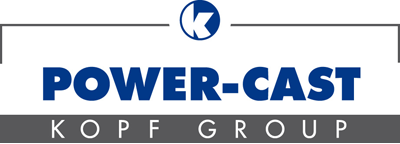TEAMWORK SECURES PRODUCTION START
Stockheim: The Upper Franconian die-cast company POWER-CAST Zitzmann has invested heavily, for today and therefore also for the future. Already in 2020, a fully-automated casting cell with 1,650 tonnes of closing force was commissioned. With foresight, the responsible persons had scheduled a planning time of 12 months, which included a little bit of a buffer, too. Just in case. After all, this is the largest casting cell in the group of companies. That it would still get tight and that the planned production start was threatened, was unthinkable at the time.
High degree of automation secures competitiveness
"In order to remain competitive, me have to invest in state-of-the-art technologies and a high level of automation", says Jens Söldner, Plant Manager at POWER-CAST Zitzmann. The trend in magnesium die-cast is continuously developing towards highly complex castings with a high level of completion in order to meet the requirements for more cost-effective delivery chains. Production steps such as e.g. thread machining, which used to take place in downstream production, are now omitted. Threads are cast with significantly smaller tolerances and then assembled with self-tapping screws. Today, the removal and handling of the castings is performed by robots. Reliable qualities at best possible cycle optimisations and high process safety are the main key factors that Söldner envisions as a future opportunity for the Upper Franconian site. "Our experience, well trained specialists and focus on our core competency, the cold chamber die-cast process, makes us strong."
The new system was scheduled to start production in the spring of 2021. A fixed date, because the castings are being installed on the cut-off date for changing the model in the production line of a German car manufacturer.
A seven figure investment was made
The core piece of the casting cell is a cold chamber die-cast machine with 1,650 tonnes closing force. Upstream and downstream, devices and machines from five different suppliers, locally and abroad, are being queued. All with essential tasks in the process, where the smallest deviation could result in rejects. Via interfaces, the individual devices are integrated into the control of the die-cast machine during the installation phase, this allows the complex system to be operated via a single tablet.
But then, things did not go as planned
In an instant, the dramatic Corona situation resulted in a four-week delay in the installation of the system. The generously planned buffer until production start diminished with every day passing. Delays in deliveries from all manufacturers as well as the dropping out of external partners for the installation put the schedule under severe pressure.
The team is looking back on nerve wracking and exhausting times. The delay was caught up, last refinements were completed. Jens Söldner is proud of his employees. "A big thank you goes to our production manager Frank Bock and the maintenance team. We approached the individual tasks creatively and flexibly, in order to get the project schedule back on track ourselves." Pipes and tubes for cooling media were installed first, cladding and safety fences for the casting cell were assembled in teamwork, and then installed. All this was done "on the side", because the ongoing operations continued.
The cast consoles are being used in the area of the cockpit traverse of a middle class car. Once finished, they are covered by the dashboard. The consoles are safety-related components. They have a high level of ductility, in order to absorb kinetic forces in case of a crash, without breaking.
POWER-CAST Zitzmann
Since 1992, Zitzmann manufacturers components made of magnesium alloys by die-casting. The majority of their clients are from the automotive industry. "Due to the size of our machines, we mainly manufacture components and structural parts that are used in the interior of cars." says Jens Söldner. The castings are used both in models with combustion engines and electric cars. Due to the low density of magnesium and the stability or achievable rigidity, the work material is also ideally suited for future tasks.

